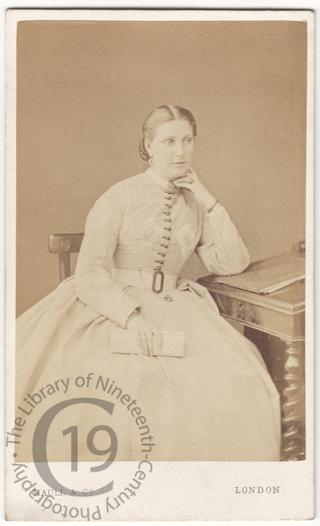
Lady Florence Baker
A carte-de-visite portrait of Lady Florence Baker, wife of Sir Samuel Baker.
She was born the daughter of a Hungarian Szekely officer from a German gentry family in Transylvania. Having lost most of her family in the Hungarian Revolution of 1848, she was subsequently stolen from a refugee camp in Bulgaria by an Armenian slave merchant.
In 1858 or 1859 she was standing in the slave market at Vidin, destined for the harem of the Pasha of Vidin, when she was spotted by Sir Samuel Baker, who was on a hunting expedition in the Balkans with his friend, the Maharaja Duleep Singh. Baker was outbid by the Pasha but bribed the girl’s attendants and ran away with her. She became his lover and accompanied him on his journeys. For a while, Baker worked in Romania on the construction of a railway and some bridges, and the British Consul there issued here with a British passport under the name Florence Barbara Maria Finnian, although she was British neither by birth nor yet by marriage.
Florence refused to stay home, instead following her husband in his travels. She spoke English, German, Hungarian, Romanian and Arabic, rode camels, mules and horses and carried pistols when in the wilds. The two were eventually married in Florence in 1865.
She died on 11 March 1916, aged 74, some 23 years after her husband. Like him, she died at their estate in Devon. She was buried with her husband in the Baker family vault at Grimley, near Worcester.
It is possible that the story how Samuel Baker met his second wife was romanticised by him and adapted to meet the expectations of the Victorian society. A rescue of an exotic princess by a brave white gentleman was a favourite plot of contemporary colonial novels. Although Sir Samuel and Lady Baker were personally charming enough to conquer most of Victorian society, Queen Victoria refused to receive Florence at court since she believed Baker had been ‘intimate with his wife before marriage’, as indeed he had.
Photographed by Maull and Co of London.
Code: 126492




